I'd like to use an Arduino to read from a large number of IR photodiodes. I have seen this question: How to Use SFH235 IR Photodiode Correctly? and would like to use a similar technique to the circuit on the left:
However, I'm not just trying to read from one photodiode. I have a large number of photodiodes arranged in a grid. I would like to be able to read from this grid with the simplest possible wiring scheme. I thought that it might be possible to use a scheme similar to what is often used for grids of LEDs:
D1,2,3 represent digital pins. I would operate this by setting e.g. D1 to output LOW, and the other two to high impedance. My hope is that this essentially "disables" the second and third column of photodiodes (since their anodes are effectively disconnected), and I could use the ADCs to read only the first column. Then I would toggle the digital pins to activate the second column, then the third, etc.
Will this work? I was originally concerned that the high-impedance state of the Arduino would be too leaky, but this link suggests that it's equivalent to a 100 Mohm resistor.
Aside: I'm an amateur, I don't really have a good grasp on the behaviour of photodiodes, so I find it difficult to reason about situations like this. I also had trouble finding SPICE models for photodiodes, so I couldn't really simulate this setup. Does anyone have pointers to approachable introductory resources for photodiodes, or SPICE models?

